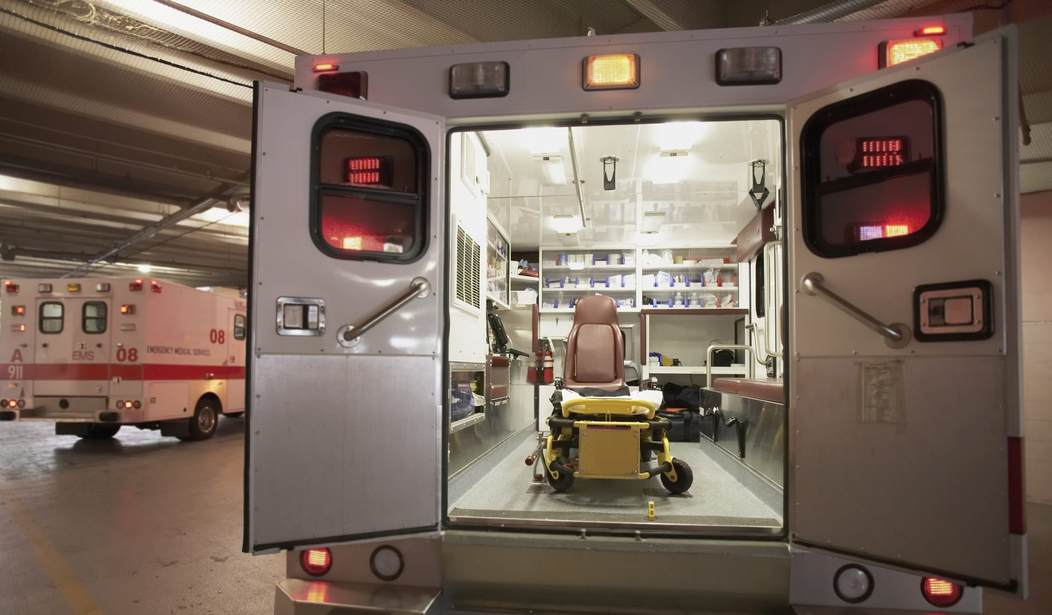An Ohio firefighter-paramedic reportedly overdosed while driving an overdose patient to the hospital Thursday night, the Dayton Daily News reported. Authorities say the paramedic’s overdose was the result of accidental exposure to an opioid.
“He was not feeling right. He was having issues seeing the speedometer controls,” said David Reichert, division chief for the Fairborn Fire Department. “His partner in the back was immediately able to stop the medic in the middle of an intersection.”
The partner apparently recognized the symptoms of an overdose and administered Narcan to the ambulance driver. The overdosing paramedic, who was not identified, was taken to the Soin Medical Center in Beavercreek, Ohio.
“There’s nothing like going to the hospital and seeing one of our guys in the hospital bed who has just been given Narcan to pull him away from dying,” Reichert said.
An additional six firefighters had to be given decontamination showers at the hospital. “It was determined that we needed to ramp up our decontamination process,” Reichert said.
Fairborn Police Capt. Terry Bennington said that evidence collected at the scene was sent to a crime lab where investigators hope to learn which drugs caused the overdose. He said the woman who was being transported to the hospital could face charges.
“It really depends on whether or not this was an accident,” he said. “My recommendation is we look at assault and inducing panic.”
There was a report that hospital personnel also were also affected, but those reports have not been confirmed.
“We were advised that there were some issues at the hospital, but I don’t think anyone up here is at liberty to speak for Soin,” Bennington said. He added, “If we can get evidence to prove that she (the overdose patient) willfully overdosed, potentially those charges could carry over to the hospital.”
“None of our guys and gals think when they come to work that they may die of a drug overdose,” Reichert said.
John Howard, president of Fairborn Professional Firefighters Union Local 1235, praised first responders and hospital personnel.
“The members of 1235 and the members of the police department did an incredible job,” he said. “The people at Soin, the nursing staff and the doctors went over and above and treated us amazing.”
This isn’t the first time a first responder has been the victim of such an overdose. According to the Dayton Daily News, “An eastern Ohio police officer overdosed in May and was revived with four doses of Narcan after he came into contact with suspected fentanyl during a traffic stop.” The officer reportedly came into contact with the drug when he brushed it off his uniform.
The Community Overdose Action Team of Montgomery County issued a warning about the dangers of accidental fentanyl overdose.
“If a first responder or member of the public is on the scene of an overdose, they should be aware that drugs containing fentanyl could be present,” the alert warned. “Fentanyl can cause an overdose or death simply by coming into contact with it. The drug can be absorbed through the skin or by inhalation. As a result, first responders should use caution during operations such as traffic stops, drug buys or arrests, and rescues.”
Last month Attorney General Mike DeWine warned about accidental drug exposure. “A person doesn’t have to be an opioid abuser to be injured or killed by the drug. Children and first responders are among those at risk of injury or death from accidental exposure,” he wrote in a September Criminal Justice Update, citing several recent overdoses as a result of accidental exposure. “Just a speck can be deadly,” the memo said.
“To avoid accidental exposure, law enforcement should exercise caution and be aware of how they are handling items at crime scenes,” the advisory warned.
In July DeWine warned law enforcement agencies to reconsider testing drugs on the scene because of the risks of accidental exposure.
“Field testing is not a good idea,” he said. “The risk is too high.”
“We recommend that they wear personal protective equipment, especially gloves, when handling suspected drug evidence,” said Jessica Toms, a laboratory supervisor at the Ohio Attorney General’s Bureau of Investigation (BCI). “Items suspected of containing heroin or fentanyl-related compounds should not be field tested.”
Toms also recommended that suspected drug evidence “be packaged in plastic to prevent the substances from spilling or leaking.”
Both the firefighter-paramedic and the patient he was transporting by ambulance have recovered from their overdoses, Chief Reichert said.










Join the conversation as a VIP Member